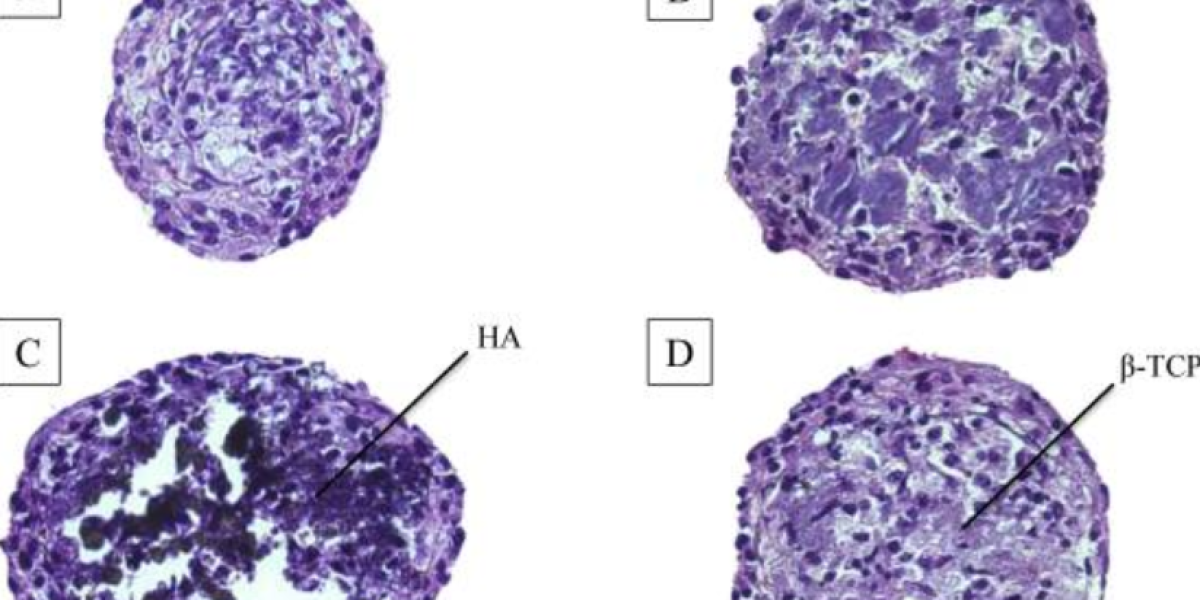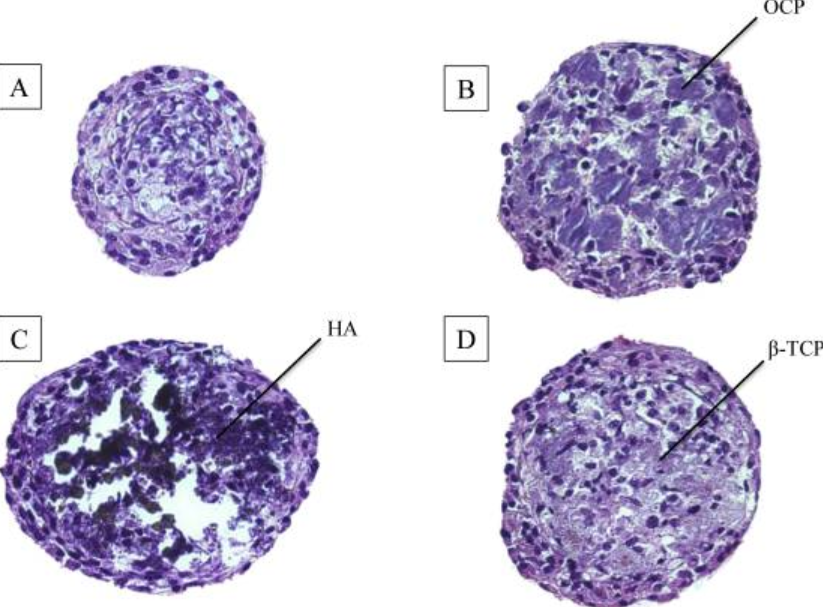Abstract
Much attention has been paid to three-dimensional cell culture systems in the field of regenerative medicine, since three-dimensional cellular aggregates, or spheroids, are thought to better mimic the in vivo microenvironments compared to conventional monolayer cultured cells. Synthetic calcium phosphate (CaP) materials are widely used as bone substitute materials in orthopedic and dental surgeries. Here we have developed a technique for constructing a hybrid spheroid consisting of mesenchymal stem cells (MSCs) and synthetic CaP materials using a spheroid culture device. We found that the device is able to generate uniform-sized CaP/cell hybrid spheroids rapidly and easily. The results showed that the extent of osteoblastic differentiation from MSCs was different when cells were grown on octacalcium phosphate (OCP), hydroxyapatite (HA), or β-tricalcium phosphate (β-TCP). OCP showed the greatest ability to increase the alkaline phosphatase activity of the spheroid cells. The results suggest that the spheroids with incorporated OCP may be an effective implantable hybrid consisting of scaffold material and cells for bone regeneration. It is also possible that this CaP-cell spheroid system may be used as an in vitro method for assessing the osteogenic induction ability of CaP materials.
Keywords: Calcium phosphate; Octacalcium phosphate; Osteoblastic differentiation; Oxygen-permeable chip; Spheroids.



